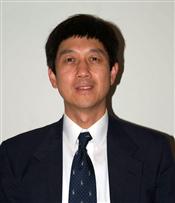Program Information
A Novel Setup Approach to Improve C-Spine Curvature Reproducibility for Head and Neck Radiotherapy Using Optical Surface Imaging with Two Regions of Interest
K Ryan1 , M Gil2 , C Della Biancia3 , G Li4*, (1) Memorial Sloan Kettering Cancer Center, New York, NY, (2) Memorial Sloan Kettering Cancer Center, New York, NY, (3) Memorial Sloan-Kettering Cancer Center, New York, NY, (4) Memorial Sloan Kettering Cancer Center, New York, NY
Presentations
MO-FG-CAMPUS-JeP3-2 (Monday, August 1, 2016) 5:30 PM - 6:00 PM Room: ePoster Theater
Purpose: To develop a novel approach to improve cervical spine (c-spine) curvature reproducibility for head and neck (HN) patients using optical surface imaging (OSI) with two regions of interests (ROIs).
Methods: The OSI-guided, two-step setup procedure requires two ROIs: ROI-1 of the shoulders and ROI-2 of the face. The neck can be stretched or squeezed in superior-inferior (SI) direction using a specially-designed sliding head support. We hypothesize that when these two ROIs are aligned, the c-spine should fall into a naturally reproducible position under same setup conditions. An anthropomorphous phantom test was performed to examine neck pitch angles comparing with the calculated angles. Three volunteers participated in the experiments, which start with conventional HN setup using skin markers and room lasers. An OSI image and lateral photo-picture were acquired as the references. In each of the three replicate tests, conventional setup was first applied after volunteers got on the couch. ROI-1 was aligned by moving the body, followed by ROI-2 alignment via adjusting head position and orientation under real-time OSI guidance. A final static OSI image and lateral picture were taken to evaluate both anterior and posterior surface alignments. Three degrees of freedom can be adjusted if an open-face mask was applied, including head SI shift using the sliding head support and pitch-and-roll rotations using a commercial couch extension. Surface alignment was analyzed comparing with conventional setup.
Results: The neck pitch angle measured by OSI is consistent with the calculated (0.2±0.6°). Volunteer study illustrated improved c-spine setup reproducibility using OSI comparing with conventional setup. ROI alignments with 2mm/1° tolerance are achieved within 3 minutes. Identical knee support is important to achieve ROI-1 pitch alignment.
Conclusion: The feasibility of this novel approach has been demonstrated for c-spine curvature setup reproducibility. Further evaluation is necessary with bony alignment variation in patient studies.
Funding Support, Disclosures, and Conflict of Interest: This study is in part supported by the NIH (U54CA137788).
Contact Email:

